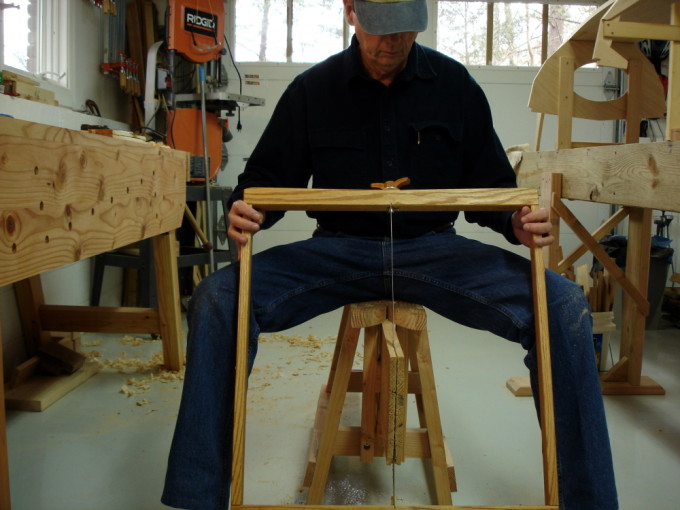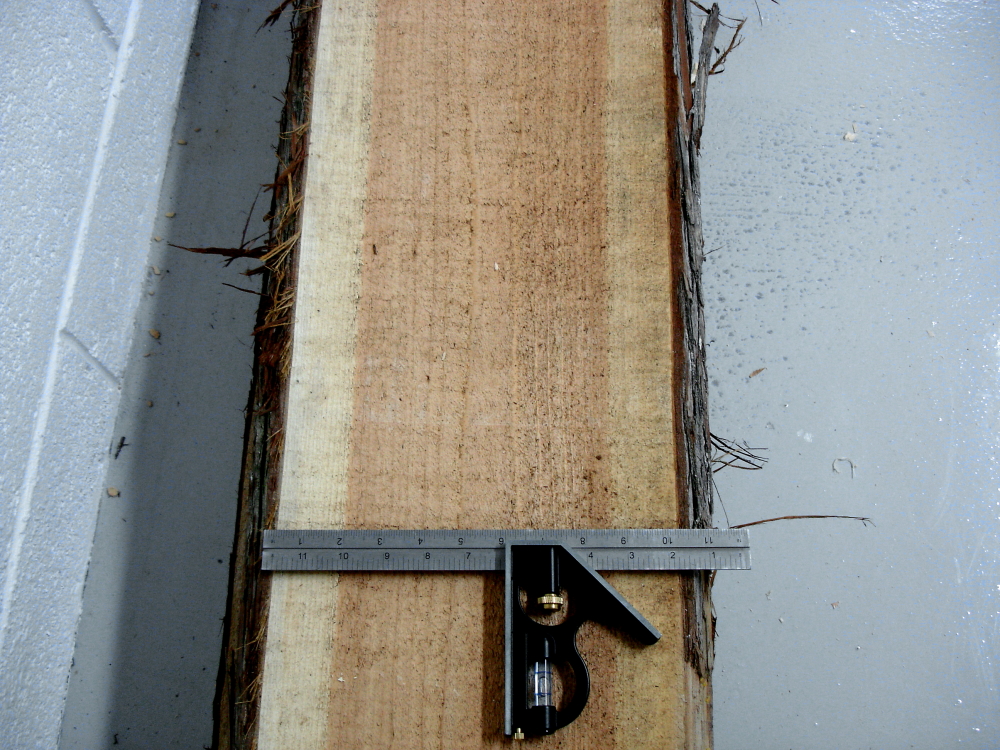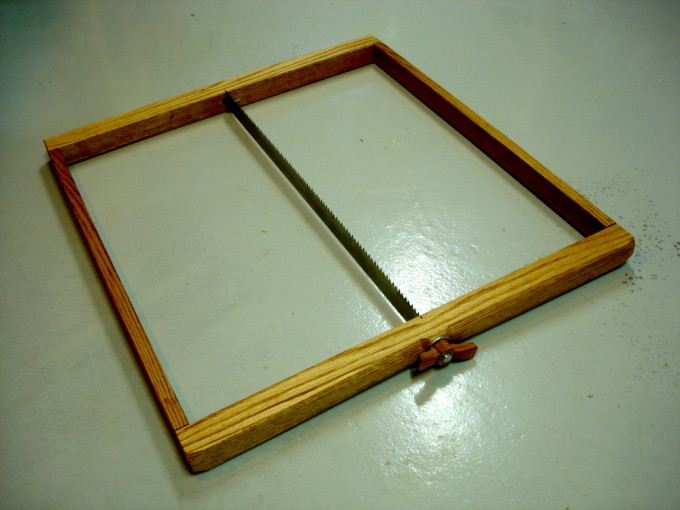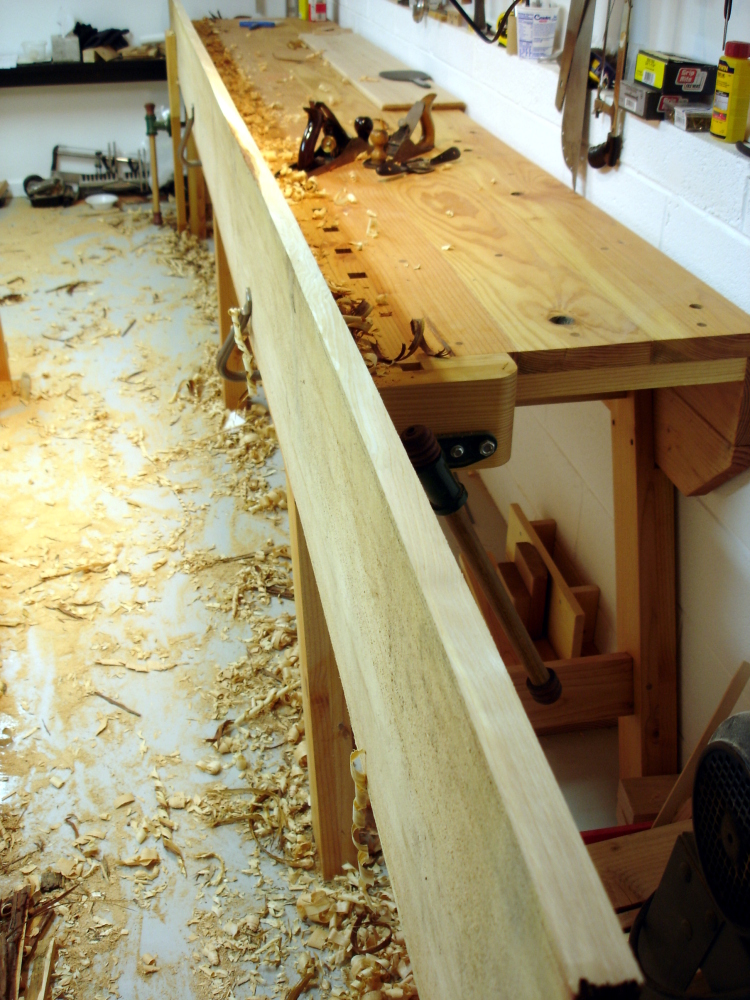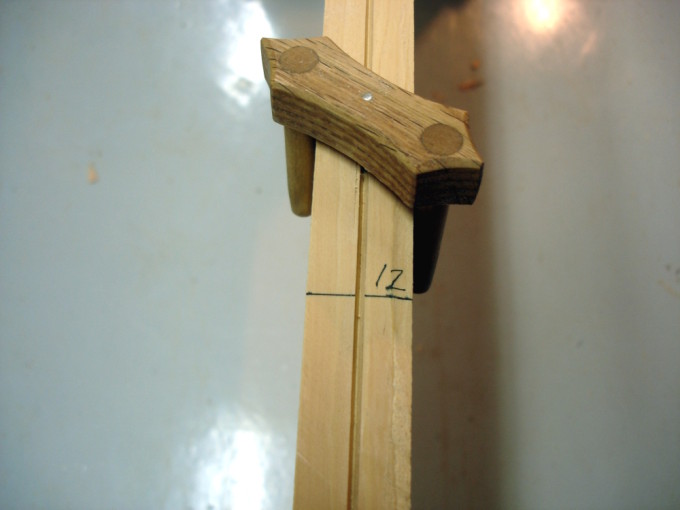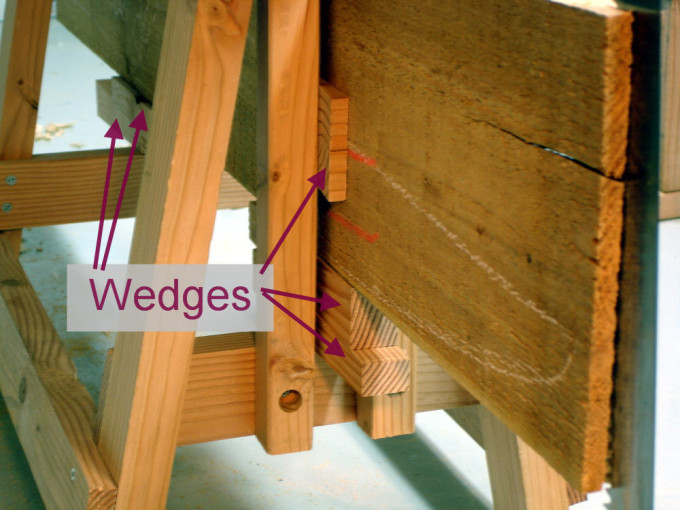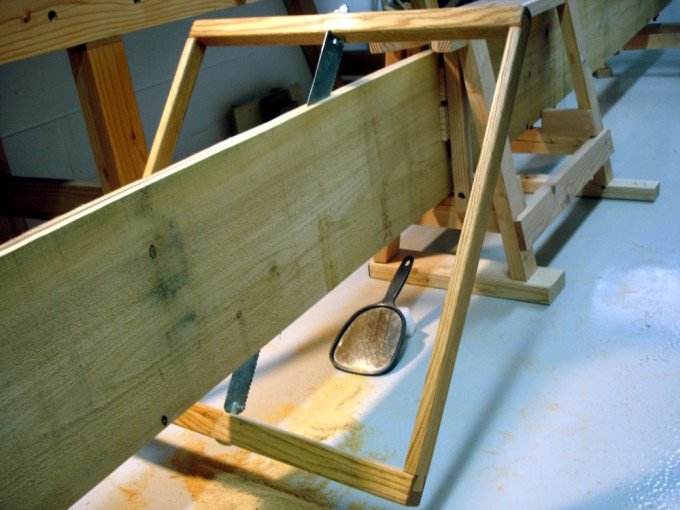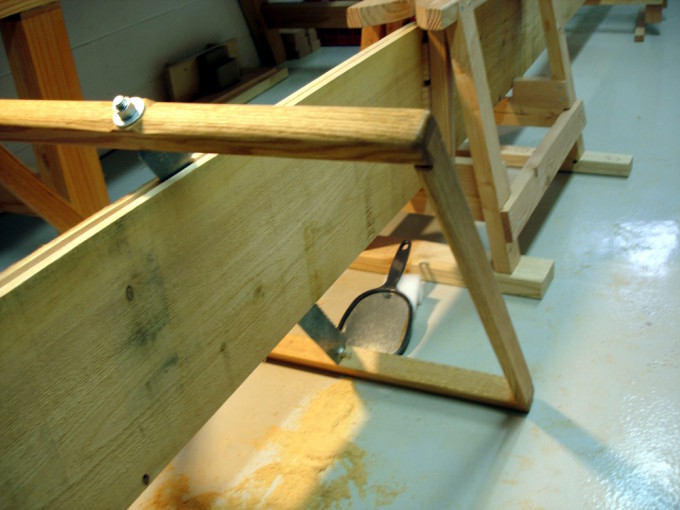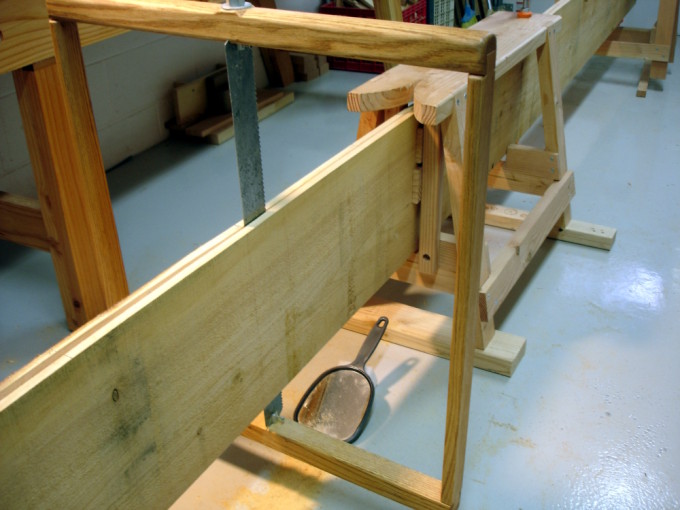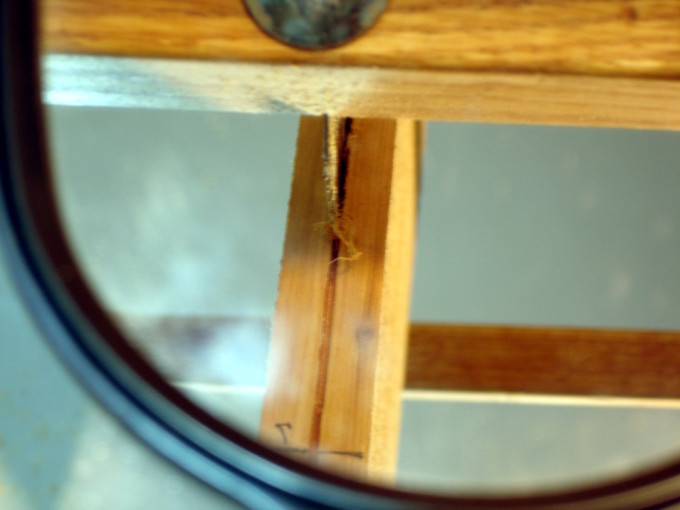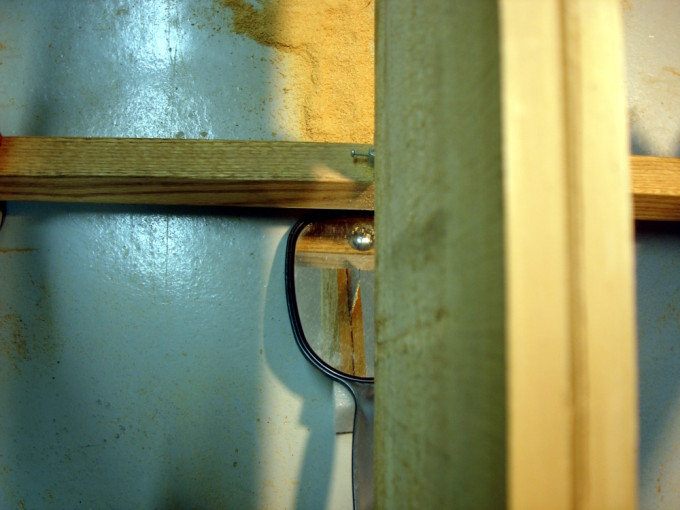Over at the WoodenBoat Forums, a newcomer asks about hand tools for small boat building. I don’t know exactly what he considers small, a dingy or canoe, or a small Trumpy. I do know, however, a lot about the tools I used to build the Fiddlehead canoe. This list worked for me and might work for other amateur boat builders. (I doubt professionals would easily give up using power tools, which they think do the work faster.)
Bench and bench accessories
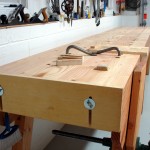 It’s the single most used tool in the shop. Mine is a 12 foot long “English Bench” taken from Chris Schwarz’s book Workbenches from Design & Theory to Construction & Use. The 12 foot length is comfortable for the size of the shop and is suitable for planing boat lumber up to 16 feet long (with some lumber shuffling of course). The bench dogs, full width planing stop on the end, and the bench hook are all shop made accessories. The Gramercy holdfasts are from Tools for Wood Working. The bench is further described in a series of blog entries.
It’s the single most used tool in the shop. Mine is a 12 foot long “English Bench” taken from Chris Schwarz’s book Workbenches from Design & Theory to Construction & Use. The 12 foot length is comfortable for the size of the shop and is suitable for planing boat lumber up to 16 feet long (with some lumber shuffling of course). The bench dogs, full width planing stop on the end, and the bench hook are all shop made accessories. The Gramercy holdfasts are from Tools for Wood Working. The bench is further described in a series of blog entries.
Layout
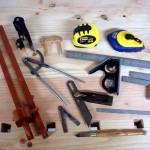 Most work starts with some sort of layout. Starting at the left edge and proceeding roughly clockwise, we have:
Most work starts with some sort of layout. Starting at the left edge and proceeding roughly clockwise, we have:
- A shop built marking gauge with two beams, one for pencil, the other for a scribe. It is made of cherry and roughly to a plan found here.
- The black plastic bodied compass / divider is an AccuScribe, which can be found at a number of woodworking tool outlets.
- The compass / divider I like more is the vintage 8 inch Bemis & Call steel compass found in an antiques shop in Liberty Maine. Cost = $10. It once belonged to someone named C L Beckett who stamped that name on each leg.
- The oak thing is a shop built center marking gauge, handy for resawing.
- A utilitarian 25 foot Stanley rule.
- A chalk line is useful for marking long rip lines on lumber. Strictly for rough cutting.
- A utilitarian try-square, a couple of small machinist squares, and a 6 inch rule.
- Two bevel gauges, one an ancient Stanley #25 (from Sandy Moss I think), the other shop made from a hacksaw blade and a rivet.
- Lastly, a very fine Pattern Pilot marking knife from Bob Zajicek at Czeck Edge Hand Tools. It is probably more useful for cabinet makers than for boat building, but is a gorgeous tool nonetheless.
Planes
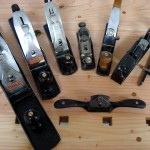 All of my planes are refurbished vintage planes. Over the life of any sharp edge tool, one will sharpen it many many times. Sharpening is an essential skill and is not difficult to master. In my view, knowing all you can know about a tool, including how to refurbish it, is only an incremental step beyond sharpening. I like to refurbish tools, bringing them back to life and putting them back to work. I am careful in what I buy and where I buy it in order to make the most of what I refurbish. My planes include (left to right):
All of my planes are refurbished vintage planes. Over the life of any sharp edge tool, one will sharpen it many many times. Sharpening is an essential skill and is not difficult to master. In my view, knowing all you can know about a tool, including how to refurbish it, is only an incremental step beyond sharpening. I like to refurbish tools, bringing them back to life and putting them back to work. I am careful in what I buy and where I buy it in order to make the most of what I refurbish. My planes include (left to right):
- A Stanley (Bailey) #7 Jointer plane. Type 16 (1933-1941) with 1935 iron. From Jon Zimmer. $145. While in Maine, I roamed the antique tool stores and found dozens of these for prices in the $70-$80 range. Each and everyone had a flaw of some sort that ruled it out. I eventually found this one from Jon, and don’t regret paying him more for finding a better tool than I could find by wandering around.
- A Stanley (Bailey)#5 Jack plane. Type 16 (1933-1941) with 1935 iron. From Jon Zimmer. $120.
- A Stanley (Bailey) #3 Smooth plane. Type 15 (1931-1932). From Jon Zimmer. $80.
- A Stanley #60 Low Angle Block plane. Circa 1900. From Sandy Moss. $50.
- A Stanley #40 Scrub plane. Circa 1910. From Jon Zimmer. $80.
- A Sargent #79 (copy of Stanley #78) Fillister and Rabbet plane and accessories. Circa 1925. From Sandy Moss. $35.
- A Stanley #51 Spoke Shave. Circa 1920. From Sandy Moss. $20.
I’m sure there are trustworthy vintage tool dealers on Ebay, but I haven’t found time to sort them out of the world’s largest yard sale. Likewise, I haven’t found all of the trustworthy dealers on the internet. However, I do trust and have done business with each of these folks: Jon Zimmer, Patrick Leach, Sandy Moss, Walt Q, and Bob Kaune.
For those who have not refurbished an old plane, Bob Smalser’s excellent tutorial will get you started: “Rehabilitating Old Planesâ€
Chisels and shaping tools
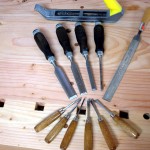 There are surprisingly few. The bench chisels are Narex. They were surprisingly inexpensive (less that $30 for the set of 4), and surprisingly good. It’s all about good steel, and these are tough and hold their edges very well.
There are surprisingly few. The bench chisels are Narex. They were surprisingly inexpensive (less that $30 for the set of 4), and surprisingly good. It’s all about good steel, and these are tough and hold their edges very well.
The little carving chisels were for carving the fiddleheads on the ends of the boat’s stems. They are not of high quality steel, so I won’t reveal their pedigree.
The only other shaping tools I use are a Stanley Surform and a half-round cabinet maker’s rasp.
Oh yeah, and sandpaper.
Saws
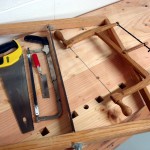 Some are store bought. The yellow handled Stanley has carbide teeth and works OK. I use it only for rough cross cutting. There aren’t a lot of high-precision straight cuts in boat building. Hey, we’re making boats, not grand pianos. A simple hack saw does the metal stuff. The little razor saw is handy once in awhile.
Some are store bought. The yellow handled Stanley has carbide teeth and works OK. I use it only for rough cross cutting. There aren’t a lot of high-precision straight cuts in boat building. Hey, we’re making boats, not grand pianos. A simple hack saw does the metal stuff. The little razor saw is handy once in awhile.
My real workhorses are shop made. The big frame saw was cut down from an antique Disston D-8 rip saw, and made roughly to Josh Clark’s design. I use it for ripping long lumber, and for resawing. Resawing is so valuable for boat lumber; getting two (or more) boards for the price of one is wonderful. See my resawing tutorial for more. The bow saw is a delightful, lightweight, highly maneuverable saw made from plans found at Gramercy Tools. I use it constantly and can’t say enough good about it.
Good learning resources for rehabilitating and sharpening saws are:
- Bob Smalser’s saw straightening and rehab tutorials on the Sawmill Creek forums
- Peter Taran’s saw sharpening primer on the Vintage Saws site
- Bob Rozaieski, of Logan Cabinet Shoppe, has a very good saw sharpening video.
Drilling
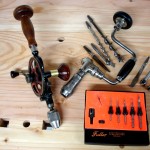 My Goodell-Pratt #5 1/2 B , eggbeater sees constant use, for both drilling and screw tightening. It dates to about between 1886 and 1905. I found it at Liberty Tools in Liberty Maine, for $28. Liberty Tools is a real neat place, but you have to go there; no mail or Internet ordering. The drill was, as most are, missing the side knob, which I fabricated. It has two speeds, and a ratcheting mechanism that works in both directions. It’s almost as fast as other hand drills, is a lot more accurate (no overrun), and doesn’t ever have dead batteries.
My Goodell-Pratt #5 1/2 B , eggbeater sees constant use, for both drilling and screw tightening. It dates to about between 1886 and 1905. I found it at Liberty Tools in Liberty Maine, for $28. Liberty Tools is a real neat place, but you have to go there; no mail or Internet ordering. The drill was, as most are, missing the side knob, which I fabricated. It has two speeds, and a ratcheting mechanism that works in both directions. It’s almost as fast as other hand drills, is a lot more accurate (no overrun), and doesn’t ever have dead batteries.
The Stanley #923 brace does the heavier work. It wants to have square shank bits for the best work. It came from Walt Q for $25.
I find the Fuller bits indispensable. There are hundreds (sometimes thousands) of screws used in boat building. Most are silicon brass and are known to fracture easily if not fed into the right size hole. Every screw hole is prepared with one of these bits. Screws are also waxed before driving. I have had no breakage problems.
Other stuff
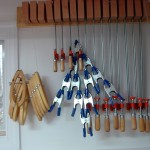 A few dozen odds and ends include screwdrivers, pliers, and not nearly enough clamps. The orange and blue clamps are from “the Borg.” The lap clamps are shop made and did exactly what they were made for.
A few dozen odds and ends include screwdrivers, pliers, and not nearly enough clamps. The orange and blue clamps are from “the Borg.” The lap clamps are shop made and did exactly what they were made for.
All in all, that’s not very many tools. A small collection can do a lot of work.
Oh yes, there was one electron murdering tool used for building the boat. Before I built my frame saw and bow saw, I used a Rigid 14 inch band saw to cut the inner stems and to resaw a few strips of cedar for the laminated bulkheads. Since those cuts, and after making the new hand saws, the only use I’ve had for the band saw is quickly cutting waste wood down to disposable size.

